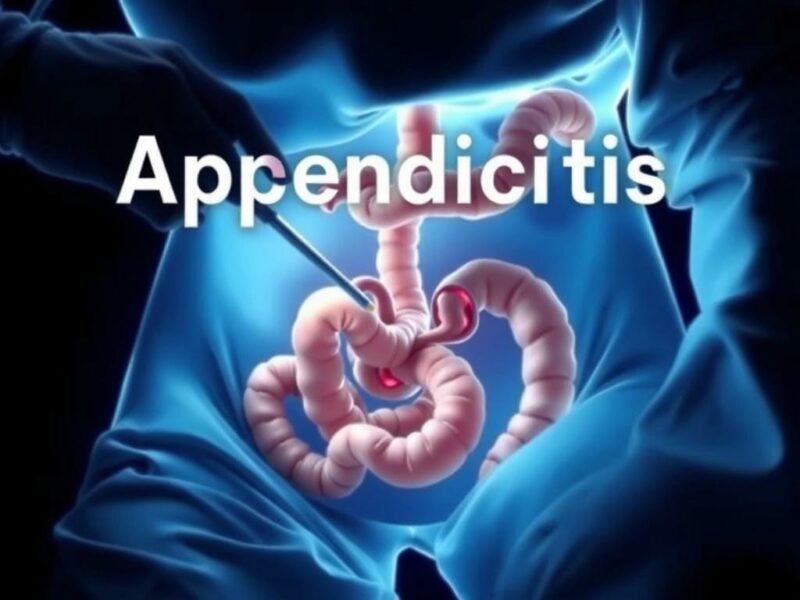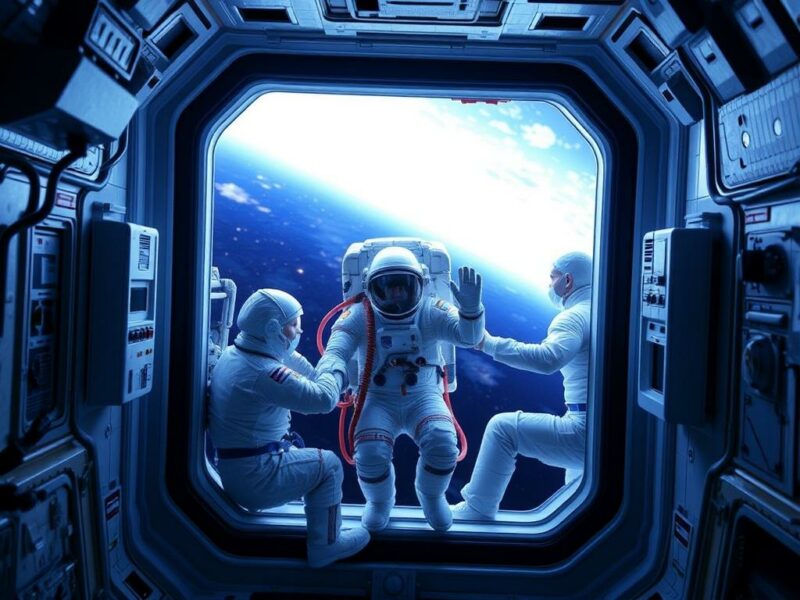Understanding Appendicitis: What Happens Inside the Body?

Appendicitis is a medical condition that involves inflammation of the appendix, a small, tube-shaped organ attached to the large intestine. On Earth, appendicitis is a common emergency requiring prompt diagnosis and surgical removal of the appendix. The symptoms—sharp abdominal pain, nausea, fever, and sometimes vomiting—are often unmistakable. But what happens when appendicitis strikes far from Earth, in the unique environment of space? Understanding appendicitis is the first step to appreciating the complex challenges astronauts face if this condition occurs during a space mission.
The appendix itself has historically been thought of as a vestigial organ, but recent research suggests it might play a role in supporting gut immunity. Regardless of its function, when the appendix becomes blocked—often due to infection or trapped stool—pressure builds up, blood flow is compromised, and inflammation follows. If untreated, the appendix can rupture, causing peritonitis, a dangerous infection of the abdominal cavity.
In the setting of space travel, the presentation and development of appendicitis can differ due to microgravity and altered human physiology. The condition demands awareness because early intervention is critical. However, traditional approaches, such as immediate surgery, are complicated in space, making appendicitis one of the more concerning medical emergencies astronauts face.
The Unique Environment of Space and How It Affects Human Health

Living in space is an extraordinary experience, but it comes with many physiological challenges. Microgravity—the condition of near weightlessness experienced in orbit—alters many bodily functions. Astronauts’ fluids shift toward the upper body, muscles and bones weaken due to lack of gravity, and even the immune system behaves differently. These changes can influence how diseases such as appendicitis develop and present.
One key factor is that microgravity impacts the way internal organs settle in the abdominal cavity. The typical signs of appendicitis, like localized tenderness in the lower right abdomen, may be harder to detect or may manifest differently. Additionally, the immune response may be blunted or altered, potentially delaying the onset of overt symptoms like fever or heightened white blood cell counts.
In contrast to Earth, where hospitals and surgical facilities are accessible, astronauts in space have only limited medical equipment and minimal surgical capacity. The isolation, communication delays, and restricted supplies add to the complexity of managing acute appendicitis. Understanding the interplay of space physiology and appendicitis is essential for ensuring astronaut safety.
The Risk of Appendicitis in Astronauts: Incidence and Prevention
Appendicitis can occur to anyone with an appendix, which means astronauts are not immune simply because they are in space. While actual cases in orbit are extremely rare, the possibility cannot be ignored. The risk of appendicitis during a mission depends on factors including the astronaut’s health before launch, mission length, and the presence of contributing conditions.
NASA and other space agencies take comprehensive measures to minimize health risks before missions. Astronauts undergo thorough medical evaluations, and those with a history of appendicitis or abdominal issues may be excluded from flight. There is also some consideration given to prophylactic removal of the appendix for longer missions, especially beyond low Earth orbit, where medical evacuation is impossible.
Space agencies promote preventive health strategies, including maintaining a balanced diet rich in fiber, hydration, and regular exercise, all aimed at reducing digestive tract issues. However, despite all precautions, the chance of appendicitis can never be entirely eliminated.
Symptoms of Appendicitis in Space: Recognizing the Warning Signs
How would an astronaut know if they have appendicitis while in orbit? Recognizing symptoms is more complicated in space for several reasons. First, symptoms may manifest less typically. For example, the position of the appendix can vary, and with microgravity causing organs to shift, the location of pain might not be the classic lower right quadrant.
Common symptoms might include:
- Abdominal pain or discomfort, sometimes diffuse or hard to localize
- Nausea or vomiting
- Loss of appetite
- Low-grade fever
- General malaise or fatigue
Given that some symptoms overlap with other common ailments in space, such as space adaptation syndrome (motion sickness), distinguishing appendicitis requires careful monitoring and diagnostic support. Crew medical officers trained in recognizing changes in health status play a critical role in early detection.
Diagnostic Tools Used in Space for Appendicitis
Access to sophisticated imaging like CT scans is not available aboard the International Space Station (ISS) or likely on future craft traveling to Mars. Instead, diagnostic approaches rely heavily on clinical examination and portable ultrasound devices, which have become essential tools in space medicine.
Ultrasound can help detect inflammation around the appendix or other abdominal abnormalities. Astronauts receive training in using ultrasound machines, and they can transmit imaging data to medical experts on Earth for consultation. Other diagnostic measures include blood tests to check for infection markers, although these too have limitations in space.
Managing Appendicitis in Space: Medical Protocols and Challenges
If appendicitis is suspected in orbit, the situation becomes a medical emergency. The immediate goal is to manage symptoms and prevent the progression to rupture. However, treatment protocols must be adapted to the limitations of space missions.
Non-Surgical Management
Recent medical research on Earth has shown that sometimes appendicitis can be managed with antibiotics rather than immediate surgery. This approach might be utilized in space, particularly for cases diagnosed early and without complications. Administering broad-spectrum intravenous antibiotics can reduce inflammation and control infection temporarily.
Astronauts carry a limited but strategically selected supply of medications, including antibiotics, which can be used in these scenarios. However, non-surgical management is not foolproof — the risk remains that the appendix may rupture despite treatment.
Surgical Options: Is Appendectomy Possible in Space?
Surgery is the definitive treatment for appendicitis on Earth. But in the confines of a spacecraft or space station, surgical intervention poses many difficulties:
| Challenge | Description |
|---|---|
| Microgravity | Blood and fluids don’t settle as on Earth, making surgical field management difficult. |
| Spacecraft Environment | Limited sterile conditions and cramped space complicate surgical procedures. |
| Training | Astronauts receive some medical training but are not specialized surgeons. |
| Resources | Limited surgical instruments and anesthesia options. |
While there have been no recorded appendectomies performed in space, theoretical protocols and experimental training simulate such possibilities. Future missions to Mars or deep space may require astronauts to be better trained or robotic surgical aids to be included.
Psychological and Operational Impact of Appendicitis on Space Missions
Beyond the physical health challenge, appendicitis in space can affect mission operations profoundly. If an astronaut becomes ill, it can cause stress among the crew and impact morale. The affected individual may experience anxiety about their health and the uncertainty of treatment far from Earth.
Moreover, mission timelines might be disrupted, especially for long voyages with no option for immediate return. Crew members often rely on teamwork to overcome crises, and managing appendicitis requires coordination between onboard care and ground-based medical support.
Training astronauts to remain calm, perform medical assessments, administer treatments, and communicate effectively is vital. Mental resilience is as important as medical readiness.
Case Studies and Simulation Exercises
Space agencies regularly conduct medical simulations to prepare astronauts for various emergencies, including appendicitis. These exercises help identify procedural weaknesses and develop contingency plans.
On Earth, analog missions in isolated environments simulate space mission conditions to practice medical scenarios. Learning from these helps improve protocols and equipment designed for real missions.
Future Innovations: How Space Medicine is Preparing to Handle Appendicitis
As humanity plans more ambitious space missions, including lunar bases and crewed expeditions to Mars, the medical community is exploring innovative technologies and methods to address health emergencies like appendicitis.
Some promising advancements include:
- Telemedicine Enhancement: Real-time video guidance from Earth-based surgeons assisting crew members during medical procedures.
- Robotic Surgery: Development of robotic systems that can perform minimally invasive surgeries remotely or autonomously.
- Advanced Diagnostic Tools: Miniaturized, AI-enhanced imaging and testing equipment for quicker and more accurate diagnosis.
- Prophylactic Surgery: Research into the benefits and risks of removing the appendix before flight for long-term missions.
- Pharmacological Research: Improved antibiotics and anti-inflammatory drugs tailored for use in microgravity.
These innovations aim to enhance crew safety and mission success, recognizing that medical autonomy will be critical when communication delays with Earth configurations grow longer.
Summary Table: Appendicitis in Space vs. Earth
| Aspect | On Earth | In Space |
|---|---|---|
| Symptom Presentation | Classic localized abdominal pain | Less typical, harder to localize pain |
| Diagnosis | Physical exam, CT scan, blood tests | Clinical exam, ultrasound, blood tests |
| Treatment | Surgical removal (appendectomy) | Antibiotics +/- surgery (challenging) |
| Medical Resources | Full hospital facilities | Limited medical supplies, training |
| Evacuation | Immediate ambulance/hospital access | Limited or no evacuation during missions |
Conclusion
Appendicitis in space represents a fascinating yet formidable challenge for human space exploration. The condition, familiar on Earth, takes on new complexities in microgravity where diagnosis, treatment, and management face unique hurdles. Astronauts must rely on a combination of medical training, advanced diagnostic tools, preventive health measures, and possibly non-surgical treatment to address appendicitis during missions. As space agencies prepare for longer journeys beyond low Earth orbit, from lunar habitats to Mars expeditions, innovations in telemedicine, robotic surgery, and pharmacology will be essential to safeguarding crew health. While the prospect of dealing with an inflamed appendix millions of miles from Earth is daunting, it highlights the incredible strides space medicine continues to make in preserving human health in the most extreme environments.



